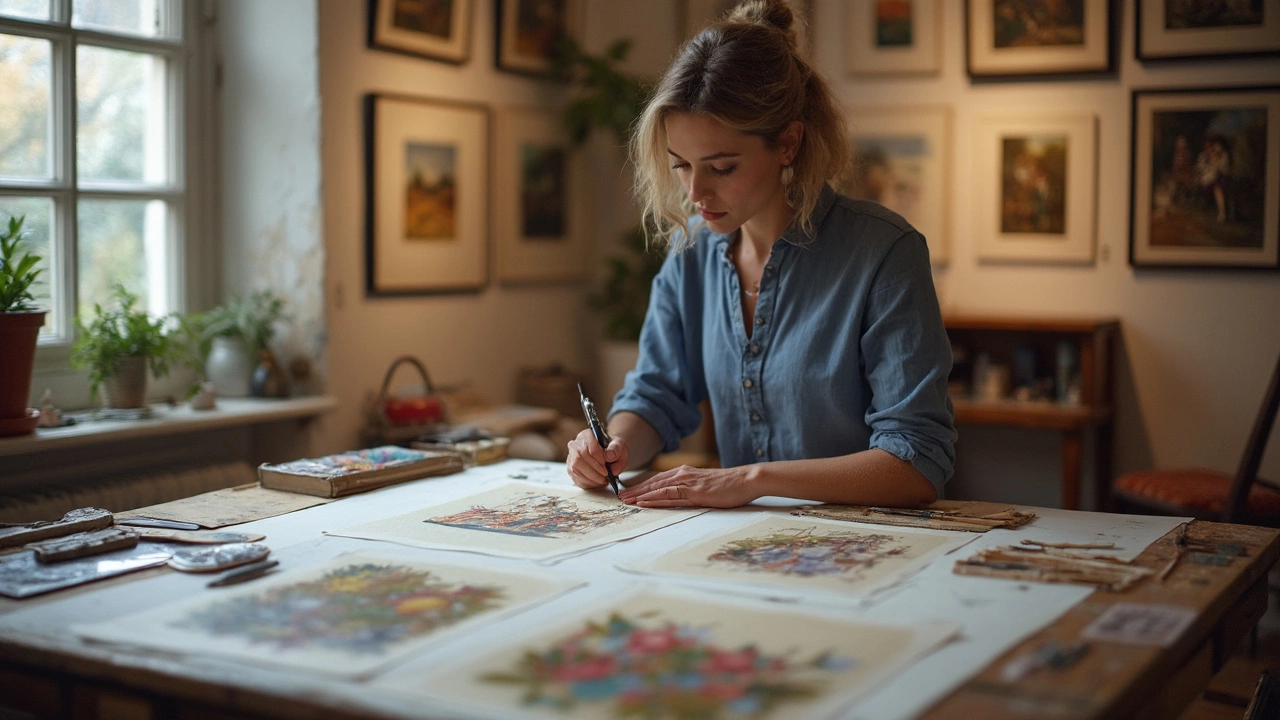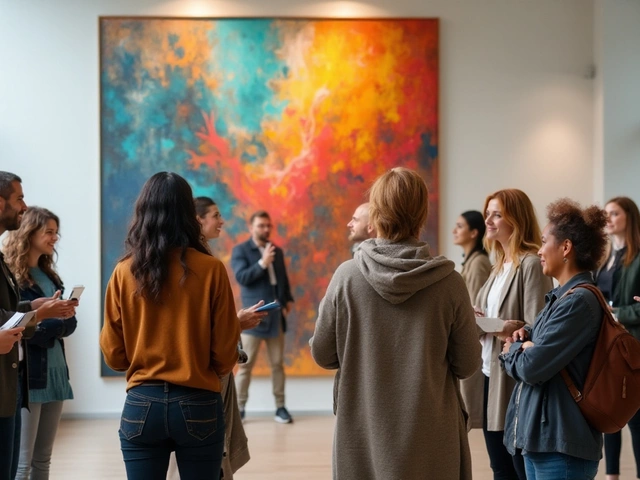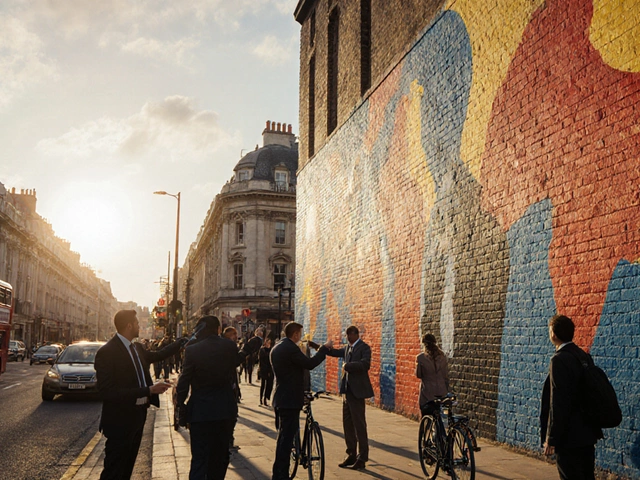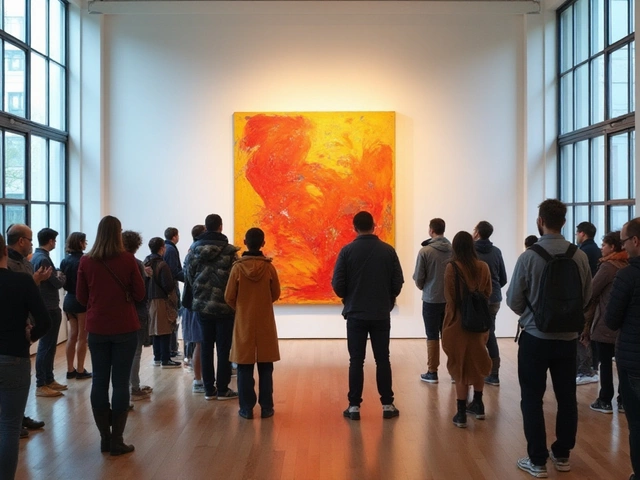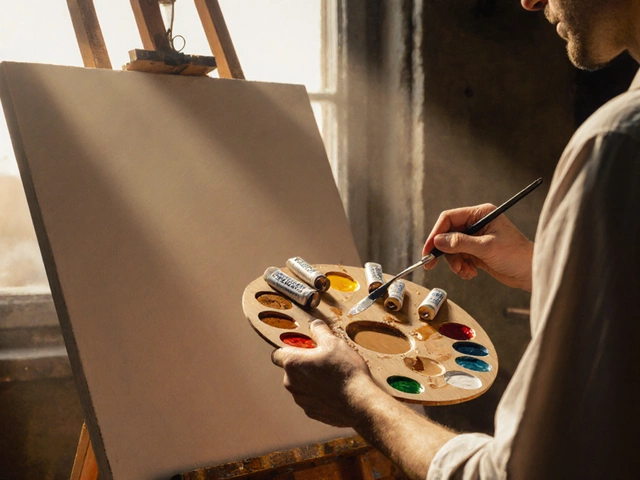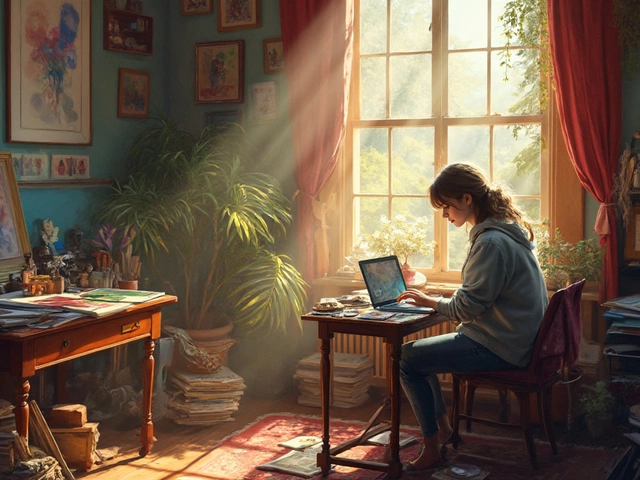Art prints with signatures—ever wonder why they matter so much? Let’s dive right in. When an artist signs a print, they’re not just adding a personal touch. It’s like a stamp of authenticity that actually ups its value. Collectors and art lovers often seek signed prints because they feel closer to the creator, as if holding a tiny piece of the artist’s essence.
Now, you might ask, are all signatures the real deal? Not necessarily. It’s really important to know how to spot a genuine signature. Often found in the lower margins, these marks can be handwritten or printed. A trained eye—or sometimes just a magnifying glass—can help you tell the difference between real and fake.
- Understanding Art Print Signatures
- Why Do Signatures Matter?
- Spotting Authentic Signatures
- Limited Editions vs. Open Editions
- Tips for Collectors
Understanding Art Print Signatures
So, what's the deal with signatures on art prints? They're more than just scribbles at the corner of an artwork. A signature on an art print can indicate that it’s a limited edition or part of a special release. This extra touch often adds value and authenticity, making it a focal point for collectors.
Types of Signatures
You've got a few types to look out for: the manual autograph, which means the artist personally signed it, and the printed signature, which might appear on open editions. The authentic manual one is where the gold is. Artists sometimes even add a date next to their signature for that extra layer of authentication.
Signatures vs. Numbers
A signature is often paired with a series number, like 5/100, indicating it’s the 5th print of a limited edition of 100. This gives you an idea of its rarity and demand. Oh, and those numbers aren’t just for show. They’re crucial for understanding how exclusive an art print truly is.
Do Artists Always Sign?
Interestingly, not all art prints come with signatures. Some artists prefer not to sign their works, particularly in the case of open editions, which aren't limited in numbers. They do this to maintain the focus on the art itself rather than adding value through a signature.
How to Spot a Fake
Worried about spotting fakes? Check for consistency in the artist’s signature style across different works. Magnification tools can also come in handy to see if ink sits above the print rather than being part of it. And don't forget provenance—the paper trail of ownership. It’s an unsung hero when proving authenticity.
| Art Print Feature | Real or Fake Indicators |
|---|---|
| Signature | Matches authenticated examples; ink visibly distinct |
| Numbering | Clear and consistent; fits with documented editions |
Why Do Signatures Matter?
The signature on an art print is more than just a scribble. It’s a declaration of authenticity and sometimes even a promise of quality. When an artist puts their name on a print, they’re vouching for its provenance and ensuring that it meets a certain standard of reproduction. This is super important in distinguishing limited editions from mass-produced works.
Adding Value to the Art
Not all prints are created equal. Some are open editions, meaning there are loads of them out there. But when a print is limited edition and signed, it generally holds higher value. A signature can transform a print from decorative wall art to a collectible that grows in price over time. In most cases, a signed limited edition can be worth up to twice as much as an unsigned one.
Connecting with the Artist
A signature can deepen the connection between the work and the owner. It’s an intimate mark that seems to say, “I was here.” This direct link to the artist makes the print more personal and desirable for buyers who appreciate an artist's touch.
Spotlight on Authenticity
Signatures can act as a guard against fakes, which are unfortunately common in the art world. A genuine signature is a sign that the piece has been properly authorized. Many art experts suggest checking for signs of a real signature when making a purchase, like variations in ink saturation or pressure.
| Type of Art Print | Potential Value Increase with Signature |
|---|---|
| Unsigned Open Edition | Minimal |
| Signed Open Edition | Moderate |
| Unsigned Limited Edition | Moderate |
| Signed Limited Edition | High |
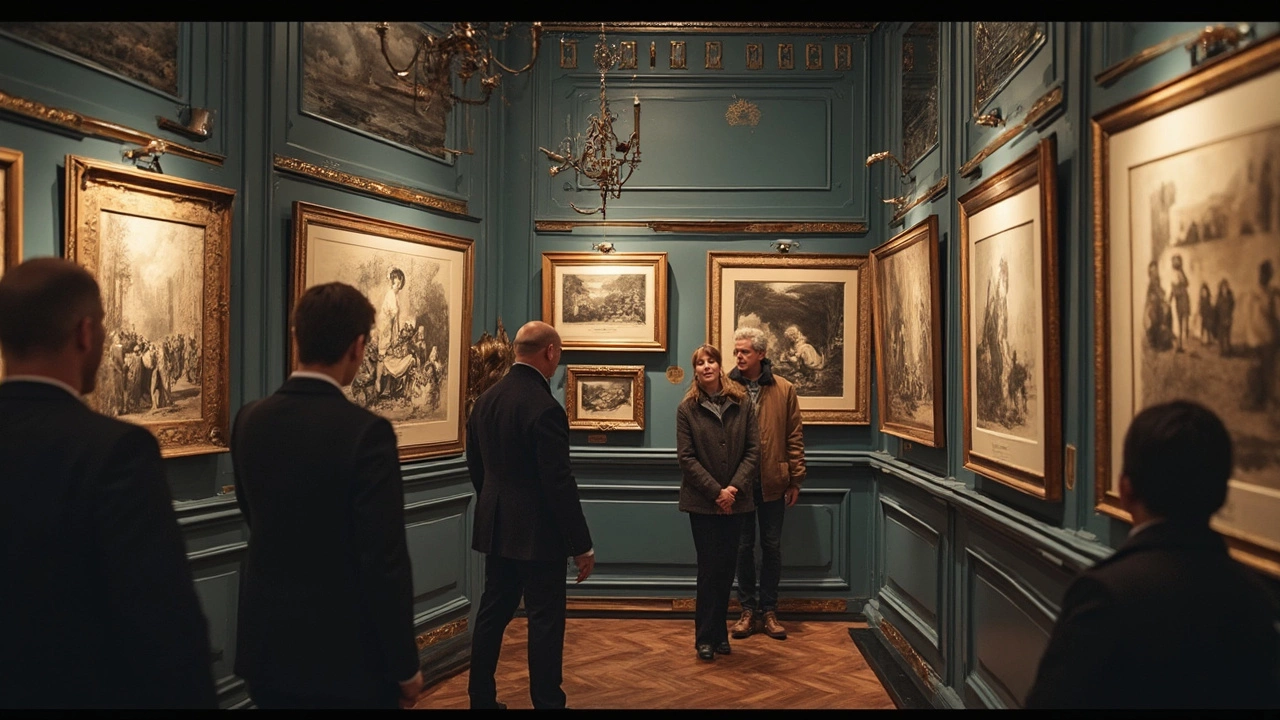
Spotting Authentic Signatures
Figuring out if a signature on an art print is the real deal might seem like detective work, but it's not rocket science. There are a few key things to look out for that can really help you separate the wheat from the chaff. So, how do you know if that signature is truly from Pablo Picasso or a very convincing forgery?
Check the Placement
First up, where's the signature? Most artists traditionally sign their prints in the lower right-hand corner. However, some might do it differently, so a quick internet search to know the artist’s habits can help. Artists tend to have a preferred spot, so look for consistency.
Examine the Ink or Pencil
Authentic signatures are often signed in pencil. Why pencil? It's all about the texture; a pencil line will have depth and tiny inconsistencies. If it looks too perfect, be cautious. Some modern artists do sign in ink, but it's crucial to check the texture and possibly even the smell if it's fresh.
"Trust but verify. The signature should have the same confidence and flow as the artwork itself." — Marion Maneker, art market expert
Study Signature Style
Every artist has a unique signature style. Compare the signature on your print with verified ones of that artist from reliable sources or galleries. Consistency in strokes, flow, and size can clue you in about authenticity.
Use a Magnifying Glass
Sometimes, seeing is believing, literally! A magnifying glass can unveil inconsistencies. Originals will have slight variations, while printed signatures might show a pattern of dots when magnified.
Get a Professional Opinion
If in doubt, seek out an expert. Art appraisers or gallery owners can offer crucial insights. They’ve got a trained eye for spotting fakes among valuable limited edition or artist proof prints.
By understanding these elements, you’ll have a better shot at verifying the signature on art prints, making you a more informed collector or enthusiast.
Limited Editions vs. Open Editions
In the world of art prints, one big decision new collectors face is choosing between limited editions and open editions. They’re quite different in terms of rarity, value, and desirability. Knowing these differences can make or break your art collection.
So, what are limited editions? As the name suggests, they're prints produced in a specific, limited number. Once they’re gone, they’re gone. Artists or publishers will number these prints, like 1/100, showing you exactly which print you have in the series. This limits the availability, creating scarcity and adding to each print’s value.
Limited editions sometimes come with more perks. For instance, they might include a certificate of authenticity or special artist notes. With fewer pieces, each artwork feels special, especially when it’s signed by the artist themselves.
On the flip side, we have open editions. These are produced in unlimited quantities, so there isn’t an end in sight when it comes to numbers. As a result, they’re usually less pricey but still offer a great option for art enthusiasts on a budget. Because there are so many available, open edition prints don’t typically hold the same investment potential as limited editions.
This table gives a quick comparison:
| Aspect | Limited Editions | Open Editions |
|---|---|---|
| Quantity | Limited number | Unlimited |
| Value | Higher, due to scarcity | Lower, due to availability |
| Cost | Usually more expensive | Generally more affordable |
| Signature | Often signed | May be unsigned |
If you’re thinking about investment value, limited edition art prints are usually the better choice since they build a sense of exclusivity. On the other hand, if you’re a fan of the art itself and want it for aesthetic enjoyment without the steeper price, open editions are the way to go.
Remember, whether limited or open, the decision should align with your goals and budget. Collecting art is a personal journey—it’s all about what makes your heart sing upon seeing that piece on your wall.
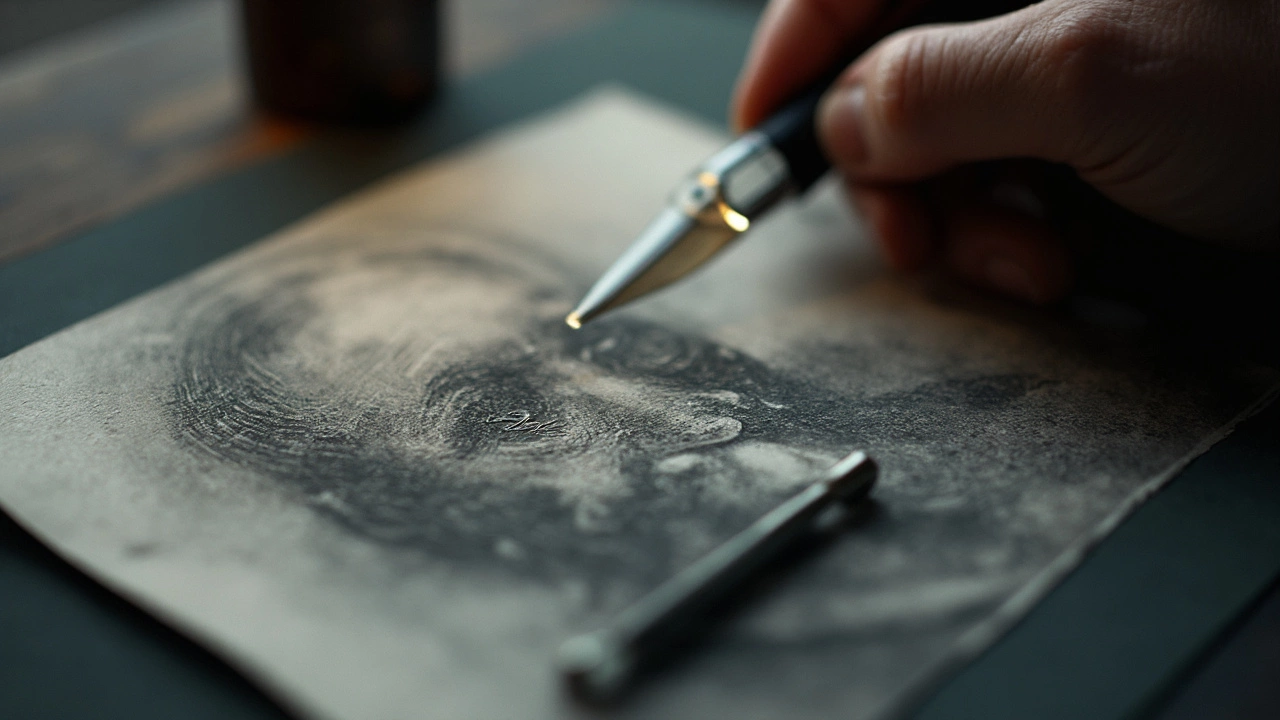
Tips for Collectors
Jumping into the world of art prints? Here are some solid tips to help you navigate collecting like a pro. Whether you're just getting started or adding to your collection, understanding the ins and outs of art prints and their signatures is key to making a wise investment.
Focus on Authenticity
Make sure the print you’re eyeing is the real deal. Check for authentic signatures in pencil or ink, often found in the bottom corners. Avoid prints with signatures that look printed or too perfect. Want a quick tip? Use a magnifying glass to spot inconsistencies in signature ink versus print.
Limited Editions vs. Open Editions
Limited edition prints are often numbered and more valuable due to rarity. Look for numbers like “12/50” which means print 12 out of 50 made. Open editions might be cheaper but are printed in larger quantities, reducing their exclusivity.
Consider the Artist's Reputation
Research the artist’s background. Are they emerging, established, or a modern master? Collecting from well-known, reputable artists could add more value to your collection over time.
Quality Matters
Inspect the print for quality. Check if it’s free from discoloration or damage. Good quality paper also enhances longevity.
| Edition Type | Estimated Value Increase |
|---|---|
| Limited Edition | Up to 40% |
| Open Edition | 5% or less |
Where to Buy
- Galleries: Great for high-end and verified pieces.
- Online Marketplaces: Do your research here; look for trusted sellers.
- Art Fairs: Good opportunities to meet artists and learn directly from them.
Arming yourself with this knowledge makes collecting not just about buying, but about finding pieces that tell a story. Happy hunting, art enthusiasts!
